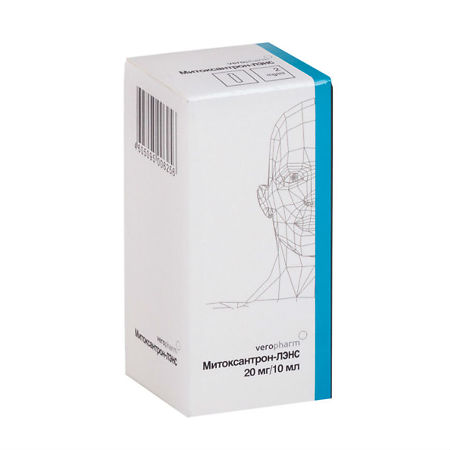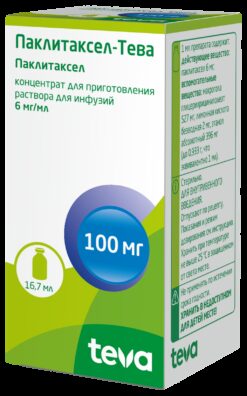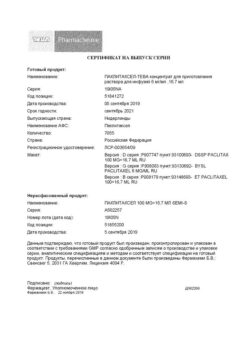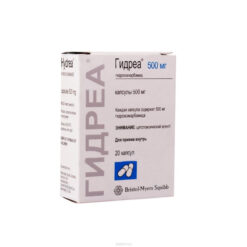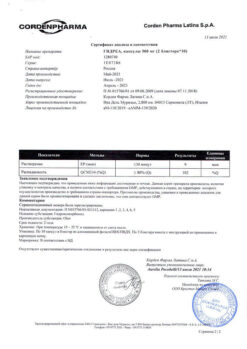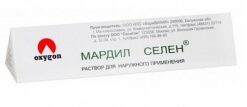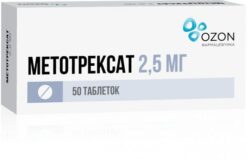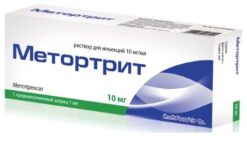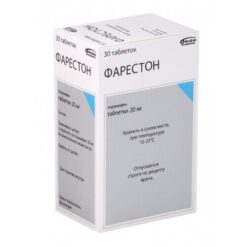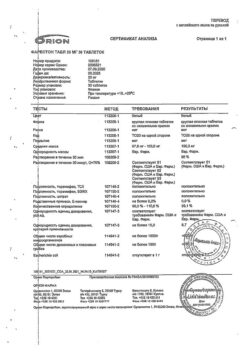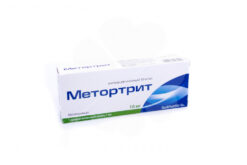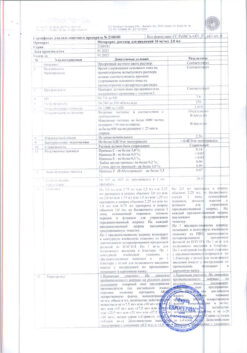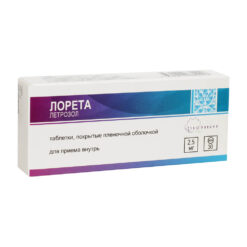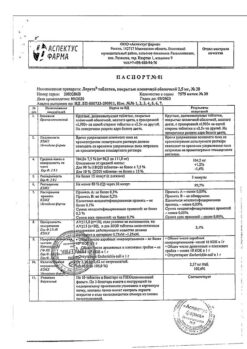No products in the cart.
Description
- Adult acute non-lymphoblastic leukemia
- Multiple breast cancer
- Cancerous lymphomas
- Cancerous lymphoma
- Hormone-resistant prostate cancer with pain syndrome
- Ovarian cancer
Primary hepatic cell cancer
Indications
Indications
Acute nonlymphoblastic leukemia in adults
Advanced breast cancer
Malignant lymphomas
Primary hepatocellular carcinoma
Hormone-resistant prostate cancer with pain syndrome
Ovarian cancer
Pharmacological effect
Pharmacological effect
Mitoxantrone is a synthetic derivative of anthracenedione.
Special instructions
Special instructions
Treatment with mitoxantrone should be supervised by a physician experienced in the use of cytotoxic agents. During the treatment process, systematic monitoring of the peripheral blood picture is necessary (before each administration, a complete blood count is required, including platelet count), laboratory indicators of liver function, as well as cardiac activity (ECG, EchoCG with determination of left ventricular ejection fraction (LVEF).
Active ingredient
Active ingredient
Mitoxantrone
Composition
Composition
1 ml of concentrate contains:
Contraindications
Contraindications
Hypersensitivity to mitoxantrone or any other component of the drug
Neutrophil count less than 1500/µl (except for treatment of non-lymphoblastic leukemia)
Pregnancy and lactation period
Mitoxantrone-LENS® should be used with caution in patients with heart disease, previous irradiation of the mediastinum, suppressed hematopoiesis, severe impairment of liver or kidney function, and bronchial asthma.
Side Effects
Side Effects
From the hematopoietic system: leukopenia, neutropenia, thrombocytopenia, rarely – anemia.
From the digestive system: nausea, vomiting, diarrhea, stomatitis, abdominal pain, constipation, anorexia; in some cases – transient dysfunction of the liver.
From the cardiovascular system: rhythm disturbances, chest pain, myocardial ischemia, decreased left ventricular ejection fraction, congestive cardiovascular failure. Toxic myocardial damage, particularly congestive heart failure (CHF), can develop both during treatment with mitoxantrone and months and years after the end of therapy. The risk of cardiotoxic effect increases when the total dose reaches 140 mg/m2.
From the respiratory system: cases of interstitial pneumonitis have been described.
Allergic reactions: There are rare reports of hypotension, urticaria, shortness of breath and rash, anaphylactic reactions, including anaphylactic shock.
Local reactions: phlebitis; with extravasation – erythema, swelling, pain, burning, necrosis of surrounding tissues. Cases of intense blue staining of the veins into which the drug was injected and the surrounding tissues have been described.
Other: menstrual irregularities, amenorrhea, transient alopecia, fever, increased fatigue, general weakness, increased body temperature, nonspecific neurological symptoms; in some cases – renal dysfunction.
During the first 2 days of using mitoxantrone, a transient blue-greenish coloration of the urine, sometimes the sclera, and also the nails and their separation from the nail bed is possible. Due to the immunosuppressive effect of the drug, the development of secondary infections is possible.
Interaction
Interaction
With the simultaneous use of Mitoxantrone-LENS® with other antitumor drugs, it is possible to increase its cardio- and myelotoxicity.
Overdose
Overdose
In case of overdose, it is possible to increase primarily myelotoxicity and the above-mentioned side effects.
Recommendations for use
Recommendations for use
Intravenously slowly over 3-5 minutes or intravenously drip over 15-30 minutes.
Intrathecal administration of the drug is prohibited!
Mitoxantrone is included in many chemotherapy treatment regimens, and therefore, when choosing a regimen and doses in each individual case, one should be guided by data from specialized literature.
For monotherapy of breast cancer, non-Hodgkin’s lymphoma and liver cancer, the recommended dose is 14 mg/m2 of body surface once every 3 weeks. In patients who have previously received chemotherapy, as well as when combined with other chemotherapeutic agents, the dose is reduced to 10-12 mg/m2.
During repeated courses, doses of mitoxantrone are selected taking into account the severity and duration of inhibition of bone marrow hematopoiesis. If the number of neutrophils decreases <1500/μl and/or platelets <50,000/μl during previous courses, the dose of mitoxantrone is reduced by 2 mg/m2; if the number of neutrophils decreases <1000/μl and/or platelets <25,000/μl of blood, subsequent doses are reduced by 4 mg/m2.
In the treatment of acute non-lymphoblastic leukemia in adults, mitoxantrone is prescribed at a dose of 10-12 mg/m2 daily for 2-3 days in combination with cytarabine to induce remission. A detailed description of combination chemotherapy regimens is presented in the specialized literature. It is possible to use high doses of mitoxantrone 14 mg/m2 or more daily for 3 days.
For the treatment of hormone-resistant prostate cancer, mitoxantrone is prescribed at a dose of 12-14 mg/m2 once every 21 days in combination with daily low-dose glucocorticosteroids (prednisolone 10 mg/day or hydrocortisone 40 mg/day).
The maximum total dose of Mitoxantrone-LENS® when administered intravenously is 200 mg/m2.
For metastatic lesions of the pleura, mitoxantrone can be administered intrapleurally, with the recommended dose being 20-30 mg. Pleural exudate should be collected before instillation, if possible.
The residence time of the drug in the pleural cavity is 48 hours, during which the patient must move as much as possible to ensure optimal intrapleural distribution of the drug. After 48 hours, repeated drainage of the pleural cavity is performed to remove possible effusion.
If the amount of effusion is less than 200 ml, then the first cycle of treatment is stopped. If the amount of effusion exceeds 200 ml, repeated instillation of 30 mg of mitoxantrone-LENS® is prescribed.
Before re-instillation of the drug, monitoring of hematological parameters is necessary. After repeated instillation there is no need to remove mitoxantrone from the 3rd pleural cavity. The maximum dose for one treatment cycle is 60 mg of mitoxantrone-LENS®. If leukocyte and platelet counts are normal, intrapleural instillation of mitoxantrone (2nd cycle) can be repeated after 4 weeks.
For 4 weeks before and 4 weeks after intrapleural administration of mitoxantrone-LENS®, systemic therapy with cytostatic agents should be avoided.
Storage conditions
Storage conditions
In a place protected from light at a temperature of 10 to 20 ° C.
Shelf life
Shelf life
2 years.
Do not use after the expiration date stated on the package
Manufacturer
Manufacturer
Veropharm LLC, Russia
Additional information
| Shelf life | 2 years. Do not use after the expiration date printed on the package |
|---|---|
| Conditions of storage | Protected from light at a temperature of 10 to 20 oC. |
| Manufacturer | Veropharm AO, Russia |
| Medication form | solution for infusion |
| Brand | Veropharm AO |
Related products
Buy Mitoxantron-LENS 2 mg/ml, 10 ml with delivery to USA, UK, Europe and over 120 other countries.

